Weightlifting is only part of the muscle-building equation. The other part is diet, and it's just as important. After all, proper food and hydration provides the nutrients and calories your body needs to repair itself after a gym session. Without proper recovery, your muscle growth will be stunted.
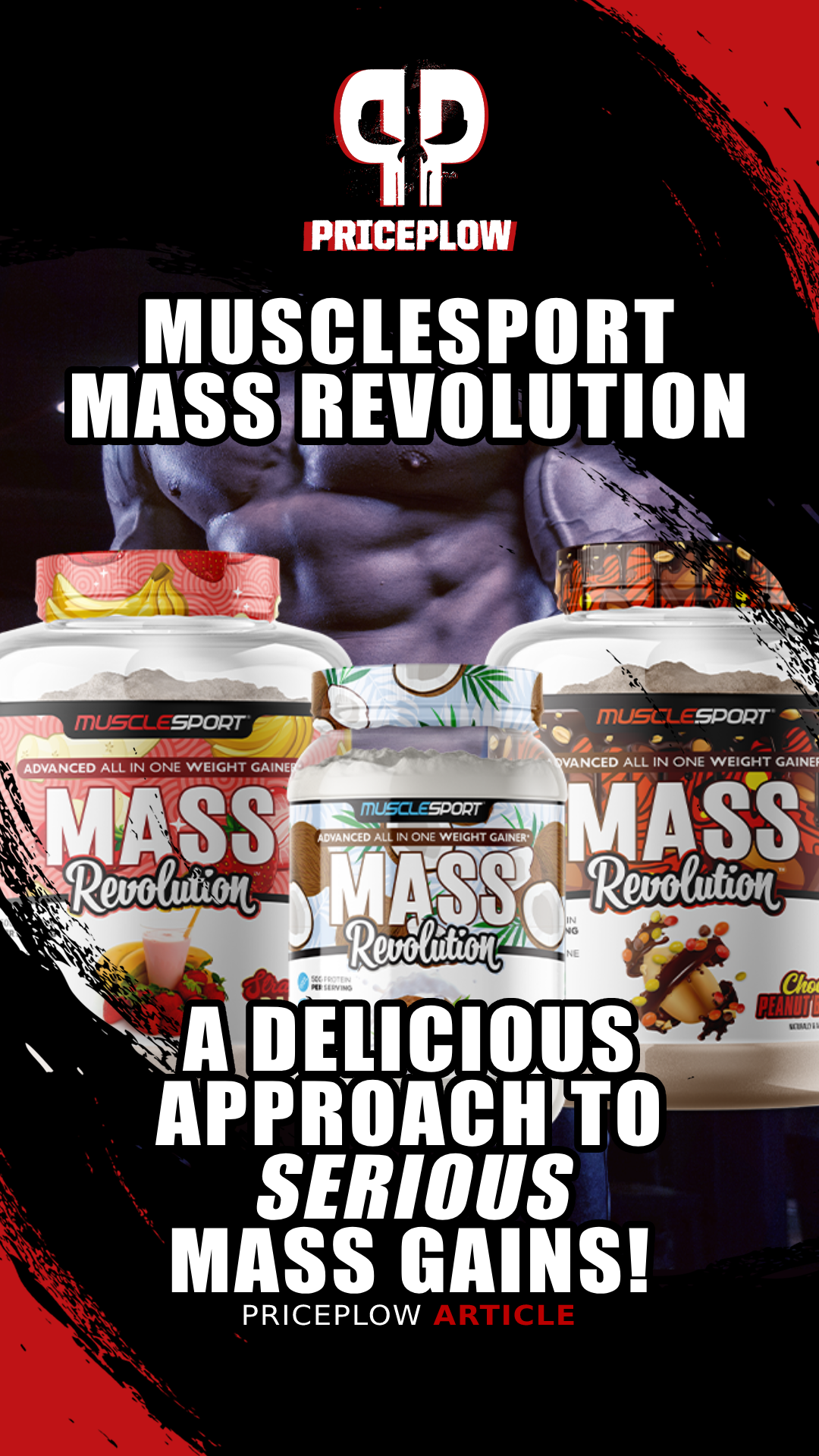
Muscle-building isn’t just about weightlifting—it’s about fueling your body with the right nutrients. Enter Mass Revolution, a gainer packed with protein, carbs, and added creatine to make bulking easy and tasty.
When you're in a bulking phase, you need calories. A lot of calories. Sometimes it can feel like a chore to eat the amount you need, and in those cases, it's nice to fall back on a supplement where you can drink those calories in a shake designed for the purpose. Enter mass gainers.
Mass gainers are exactly what they sound like — powders meant not just to boost protein intake but also to increase carbs and, by extension, calorie count.
Musclesport's Mass Revolution is one such gainer, standing out for its incredible flavors and unique formula.
Introducing Musclesport Mass Revolution
Musclesport's founder and CEO, Jason Mancuso (affectionately nicknamed "The Supp Chef"), will tell you himself that he's not a huge fan of weight gainers. They're not always high quality products. However, this one came from consumer demand, especially from retailers and international accounts who love Musclesport Lean Whey and wanted similar flavors with a value-added profile.
Mass gainers typically contain a few standard elements. First, a carb source provides the bulk of the calorie load in the shake. Next, protein — usually in the form of whey — is essential. Some brands also add ingredients to enhance the supplement's nutritional profile and improve absorption. Mass Revolution includes all these elements and more, such as alpha lipoic acid and vanadyl sulfate to support carb processing.
But where it really goes above and beyond is with the added creatine monohydrate alongside agmatine sulfate to turn this into a serious mass monster. And then they added even more amino acids!
Mass Revolution isn't brand new, but in October 2024, Musclesport has released three new delicious flavors for the product: Strawberry Banana, Coconut Cream Splash, and Chocolate Peanut Butter Chip.
We're going to dive into how Musclesport Mass Revolution works, but first, let's check PricePlow for good Musclesport deals, and check out our video review of the product:
Musclesport MASS Revolution – Deals and Price Drop Alerts
Get Price Alerts
No spam, no scams.
Disclosure: PricePlow relies on pricing from stores with which we have a business relationship. We work hard to keep pricing current, but you may find a better offer.
Posts are sponsored in part by the retailers and/or brands listed on this page.
Musclesport Mass Revolution – Supplement Facts
First, the supplement facts panel. A four scoop (181.6g) serving of Mass Revolution contains the following:
- Calories: 750
- Total Fat: 5.5g
- Saturated Fat: .5g
- Total Carbohydrates: 150g
- Dietary Fiber: 0.5g
- Sugars: 40g
- Protein: 25g
Musclesport Mass Revolution Ingredients
Rapid Mass Carb Matrix
With Mass Revolution being a mass gainer supplement, we can expect a lot of carbs, and that is exactly what we're getting. In each serving, you're looking at a whopping 150 grams of carbs, which is sure to start filling out your muscles – provided you're sticking to a solid training regimen.
Every brand chooses different carb sources for their mass gainers, and different sources have different advantages and disadvantages. First and foremost, it's important to ensure your carb sources are relatively clean. After all, bad carbs lead to poor outcomes.
Mass Revolution's Rapid Mass Carb Matrix contains glucose polymers, cane sugar, and d glucose. In other words – maltodextrin, sugar, and glucose. Looking at the label, it's mostly glucose polymers (maltodextrin), with about one-sixth coming from sugar and dextrose.
Sugar results in a faster insulin spike than more complex carb sources like oats and potatoes, but this isn't necessarily a bad thing if you're not a diabetic. In fact, insulin is critical for muscle growth. As far as sugar goes, though, these are fairly clean sources as opposed to something like corn syrup.
Rapid Mass Muscle Stimulation Protein Matrix
Musclesport's customers are no stranger to incredible tasting whey protein thanks to their Lean Whey.
Whey protein stands out as one of the top protein sources due to its high bioavailability. Derived from cow's milk, whey is a complete protein, containing all nine essential amino acids.[1] Moreover, it is insulinogenic, making it highly effective for post-exercise recovery.
Studies have shown that supplementing with whey, when combined with a balanced diet, can enhance strength and improve body composition.[2-5]
Whey Protein Concentrate
Whey protein concentrate (WPC) is a type of whey protein that contains between 34-80% pure protein by weight. Although it is less pure than whey protein isolate (WPI), which we'll cover shortly, WPC retains valuable components like lactoglobulins, immunoglobulins, and lactoferrin.[6,7] These compounds provide immune system support, which is essential for promoting healthy growth.
Whey Protein Isolate
Whey protein isolate (WPI), as mentioned earlier, is standardized to contain at least 90% protein by weight.[8] The key advantage of WPI is its simplicity in managing your macronutrient intake. Since it's nearly pure protein, you can easily adjust your protein consumption without significantly increasing your intake of carbohydrates or fats.
Whey Protein Peptides
Whey peptides consist of amino acids derived from whey, but they are smaller in size. This allows peptides to offer a more targeted approach, enhancing bioavailability and improving digestion for more efficient absorption.[9]
-
Muscle Preservation Matrix (10g)
- L-Glutamine is a conditionally essential amino acid vital for muscle protein synthesis, the immune system, and gut health.[10] While the body naturally produces glutamine, it can become deficient during stress, such as injury, illness, or intense exercise.[10,11] Studies have highlighted glutamine's role in recovery, showing that supplementation reduces soreness and enhances muscle recovery, although it may not directly increase muscle mass.[12]
- L-Leucine plays a critical role in these formulas by activating the mTOR pathways,[13] which are key to muscle growth. This is the most important BCAA (branched-chain amino acid), supported by isoleucine and valine.
- L-Lysine supports immune health, reduces inflammation, and promotes recovery.[14]
- L-Threonine maintains healthy skin, connective tissues, and digestive health by supporting structural proteins like elastin and collagen. It also acts as a precursor to amino acids that benefit the central nervous system and helps preserve mucus linings and maintain intestinal walls, promoting nutrient absorption and overall digestive balance.[15,16]
- L-Isoleucine works with leucine to stimulate muscle protein synthesis and plays a crucial role in recovery by enhancing muscle glucose uptake by up to 71%, aiding faster and more efficient nutrient absorption.[17] This is the second of three BCAAs.
- L-Valine is the third BCAA and supports leucine and isoleucine in maximizing muscle protein synthesis. It also promotes glycogen synthesis, which benefits endurance athletes by increasing glycogen stores, enabling them to train harder and longer.[18][19]
- L-Phenylalanine acts as a neurotransmitter precursor, boosting the production of dopamine, epinephrine, and norepinephrine, which improve mood and promote feelings of happiness and relaxation.[20,21] This enhancement can positively impact gym performance and daily productivity, making proper nutrient intake crucial for optimal well-being.
- Methionine supports digestive health, enhances the immune system by breaking down into cysteine, and promotes glutathione synthesis to reduce oxidative stress,[22] ensuring proper nutrient absorption and overall well-being.
- L-Histidine supports blood flow by regulating hemoglobin levels[23] and enhances workout endurance by working with beta-alanine to produce carnosine,[24] a compound that improves exercise performance.
- DL-A-Hydroxy-Isocaproic acid (HICA), a metabolite of leucine, is more effective than leucine at activating the mTOR pathway, driving muscle synthesis due to its faster absorption. Research shows that HICA can reduce muscle soreness, increase muscle mass, and decrease fat mass, though higher doses than typically provided are needed to maximize these benefits, as seen in studies.[25]
-
Nitrogen Retention Blend (550mg)
-
Lactase / Protease
Your body utilizes enzymes to break down carbs and proteins. Musclesport has included two enzymes — lactase and protease — to aid digestion. Lactase breaks down lactose, the milk sugar in the whey protein of this formula. Protease helps the body absorb and utilize the protein component.
-
Brewer's Yeast
Brewer's yeast is made from the fungus Saccharomyces cerevisiae and is used in beer-making. However, it is also an extremely dense natural source of B vitamins, including B1 (thiamine), B2 (riboflavin), B3 (niacin), B5 (pantothenic acid), and B6. These vitamins are critical for converting food into usable fuel.
With all of these, you'll hardly need a separate B-complex!
-
-
Mass Stack Blend
-
Creatine MagnaPower (5g)
Creatine MagnaPower is a form of creatine chelated with magnesium, making it 84.4% creatine by weight.[26] Studies comparing creatine monohydrate and creatine magnesium chelate show both forms are equally effective in improving strength, particularly in one-rep maximum bench press performance, with no significant differences in results.[27] Limited evidence suggests that the chelated form may offer better bioavailability due to its chemical stability,[28] although further research is needed to confirm this.
Magnesium, the mineral chelated to creatine in this form, provides its own health benefits, including roles in essential metabolic processes. Magnesium deficiency has become more common due to declining magnesium content in foods,[29-33] often resulting in fatigue, insulin resistance, and cardiovascular issues.[34,35]
As a cofactor for over 300 enzymes, magnesium deficiency can contribute to various health problems, such as migraines, hypertension, type 2 diabetes, and osteoporosis.[36] Thus, the inclusion of magnesium in Creatine MagnaPower offers not only a source of creatine but also additional support for overall health and metabolic function.
-
Agmatine Sulfate
Agmatine inhibits arginase, an enzyme that breaks down arginine in the blood,[37] extending arginine's activity and boosting nitric oxide (NO) production for enhanced vasodilation. This effect, similar to citrulline, is achieved through a different mechanism. Additionally, agmatine has neurotransmitter-like effects, potentially improving mood,[38] making it a valuable addition to pre-workout formulas for both physical and mental performance.
-
-
Nutrient Delivery System
-
Alpha Lipoic Acid (20mg)
Alpha-lipoic acid (ALA) is a fatty acid found in mitochondria, essential for regulating cellular energy production.[39] ALA increases AMPK expression, suppresses appetite, and aids the liver in metabolizing fat,[40] making it beneficial for reducing fatty tissue in the liver. This is especially important due to the link between non-alcoholic fatty liver disease (NAFLD) and conditions like insulin resistance, metabolic syndrome, and type 2 diabetes.[41]
ALA can improve blood glucose levels, increase insulin sensitivity,[41] and protect pancreatic beta cells.[42] Its potential to enhance glycemic control has led to research on using ALA to treat diabetic neuropathy and reduce HbA1c levels.[43,44]
-
Vanadyl Sulfate (3.75mg)
See all Musclesport supplements on PricePlow
Vanadium is a trace mineral that supports glycemic control by increasing insulin sensitivity and helping regenerate pancreatic beta cells,[45] particularly benefiting those with metabolic syndrome linked to type 2 diabetes.[46] Although its mechanisms are not fully understood, vanadium appears to mimic insulin,[47] aiding in glucose regulation and disposal.
-
All Musclesport Mass Revolution flavors
Check out our up-to-date list of Mass Revolution flavors below:
Musclesport tells us that these amazing flavors carried over from Lean Whey. The Chocolate PB Chip even has real branded peanut butter cups added, and rumor has it that the Coconut Caramel flavor tastes like a Girl Scout Samosa! However, Coconut Crème is the Supp Chef's favorite -- it tastes like a coconut crème ice cream bar.
Mass Revolution: A Mass Gainer That Tastes As Good as Lean Whey?
Musclesport has long been known for Lean Whey, their protein powder that stands out for its Fat Metabolizing Matrix and its out-of-this-world flavors. The brand was founded by Jason Mancuso – The Supp Chef – and has staked out a claim as the purveyors of gourmet powders.
This reputation now extends to mass gainers with Mass Revolution. Mass gainers can be challenging when it comes to flavoring; the density of the powders often makes taste a secondary concern. However, this is not the case with Mass Revolution. You'll be consuming 750 calories and enjoying every second of it.
But go for the "advanced serving" on the labels, and it's a whole 1500 calories! Can you handle it?!
Musclesport MASS Revolution – Deals and Price Drop Alerts
Get Price Alerts
No spam, no scams.
Disclosure: PricePlow relies on pricing from stores with which we have a business relationship. We work hard to keep pricing current, but you may find a better offer.
Posts are sponsored in part by the retailers and/or brands listed on this page.
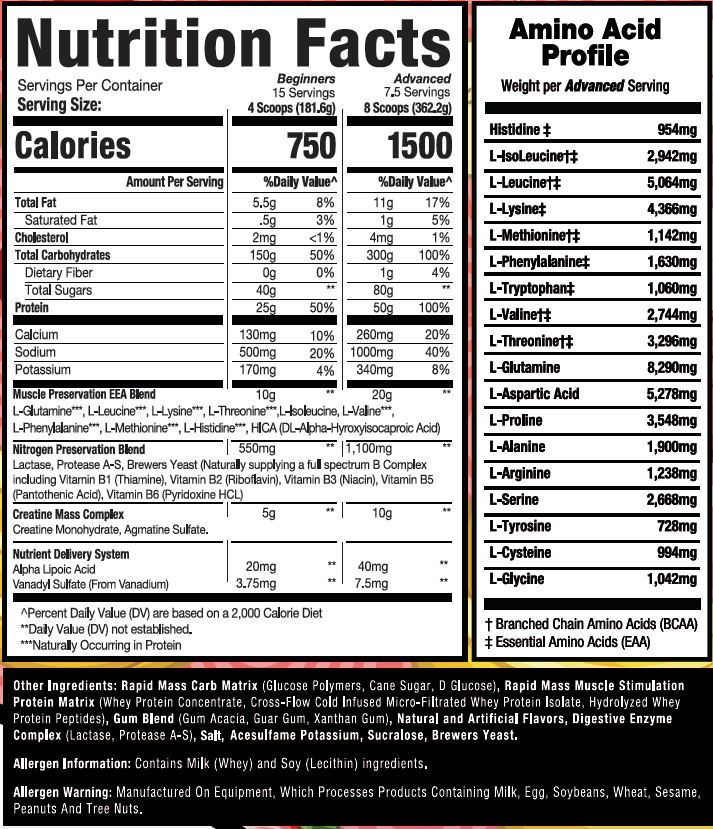
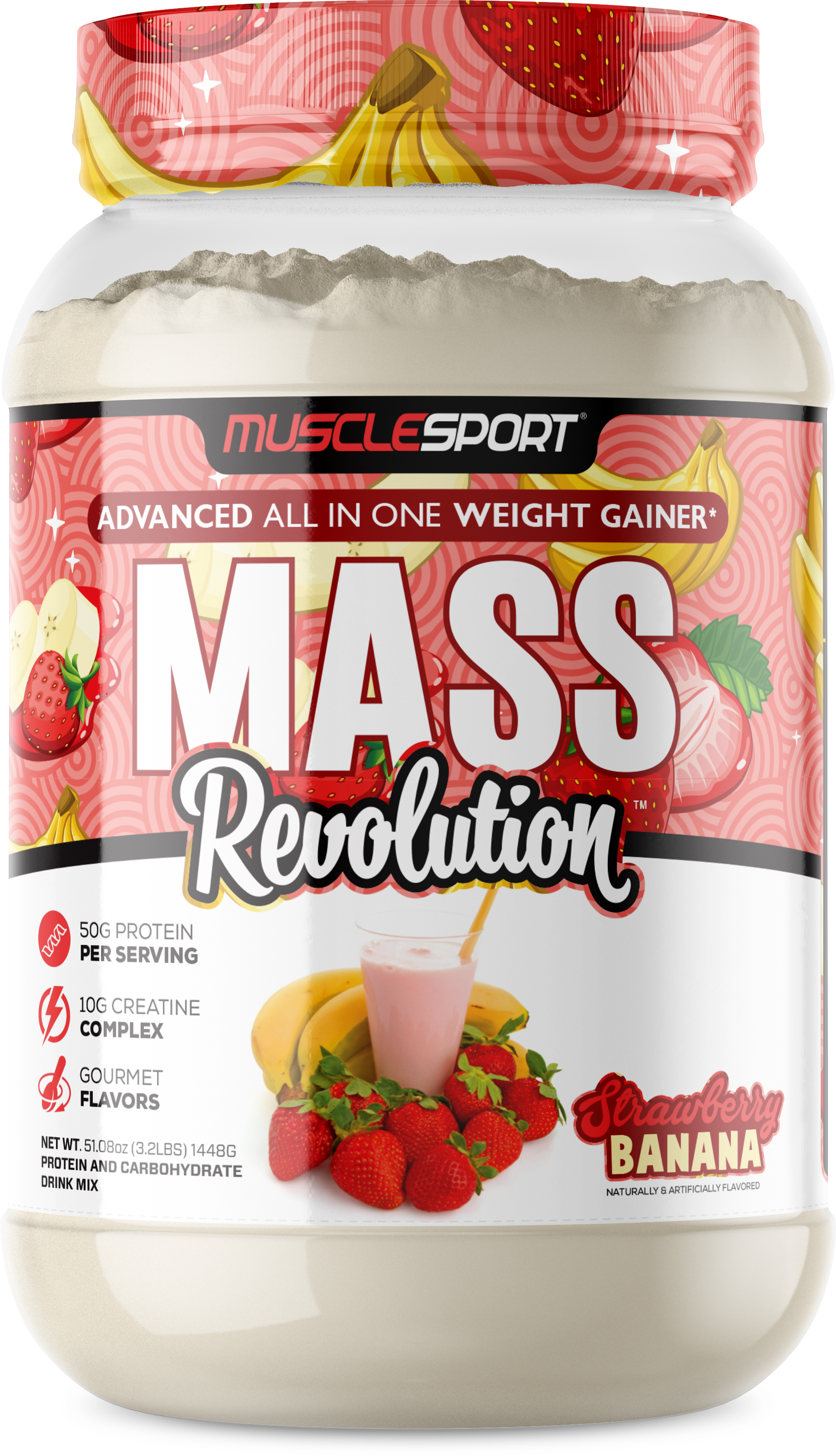
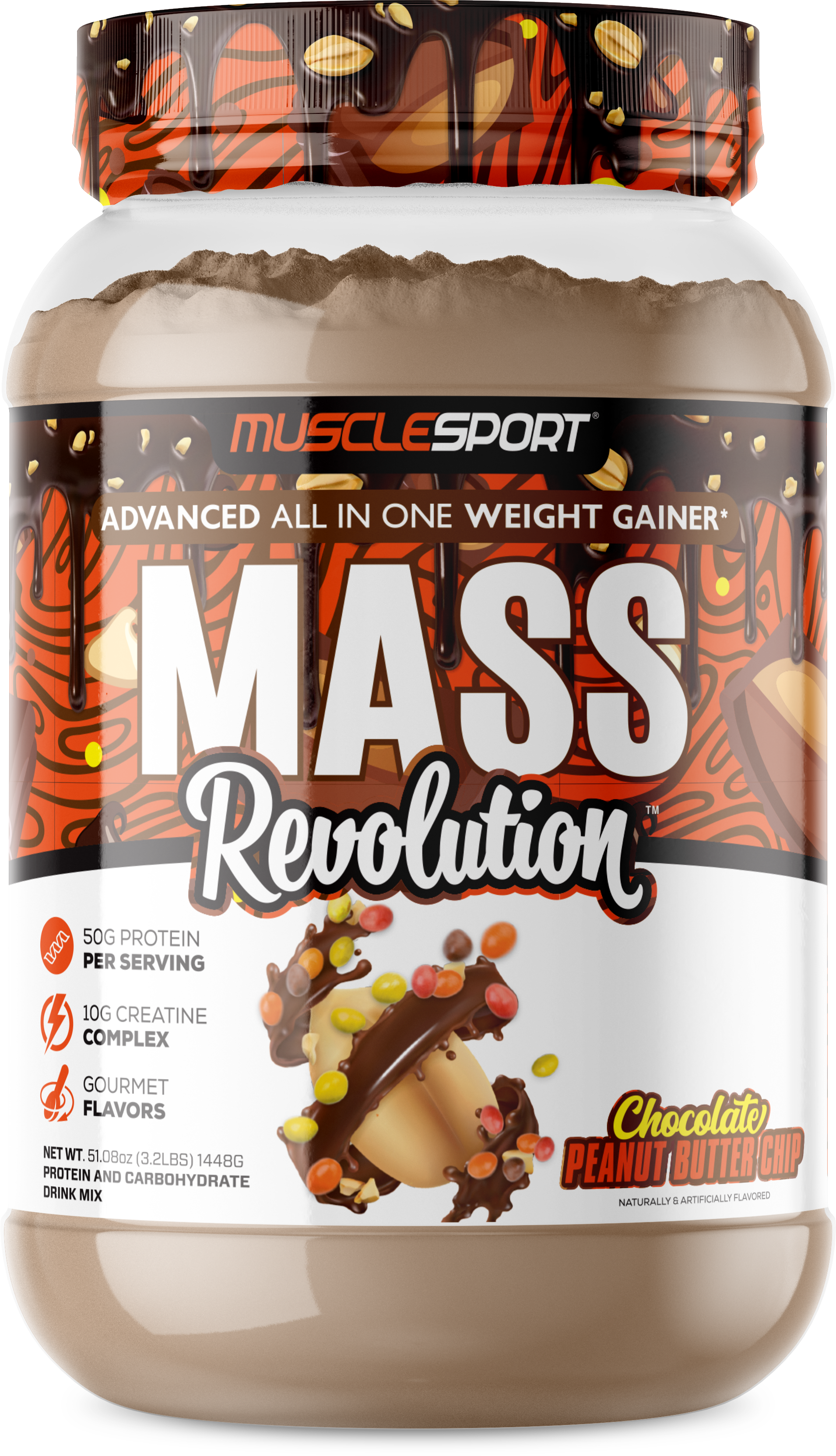
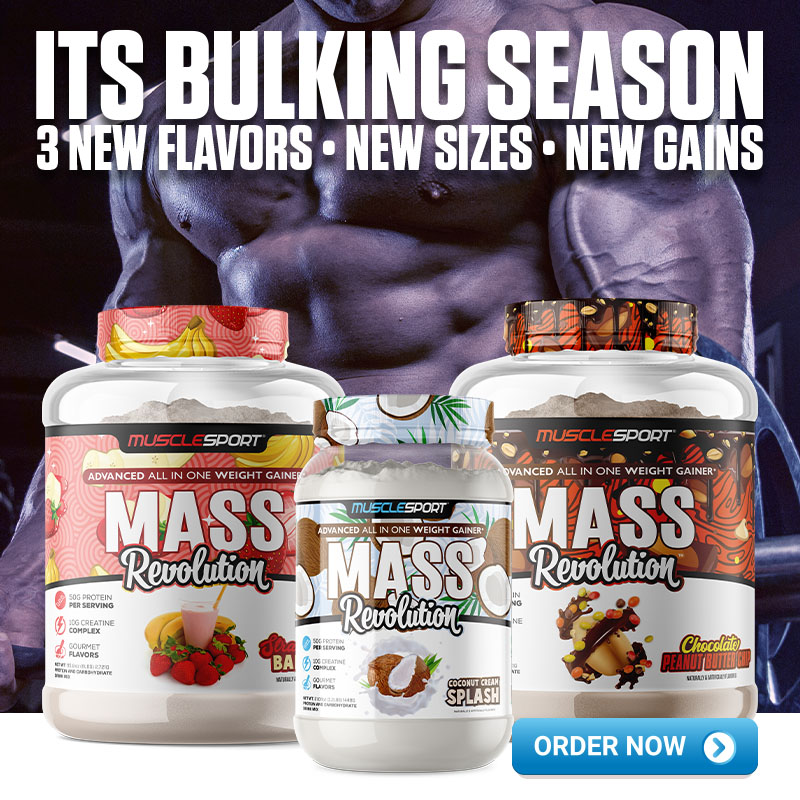


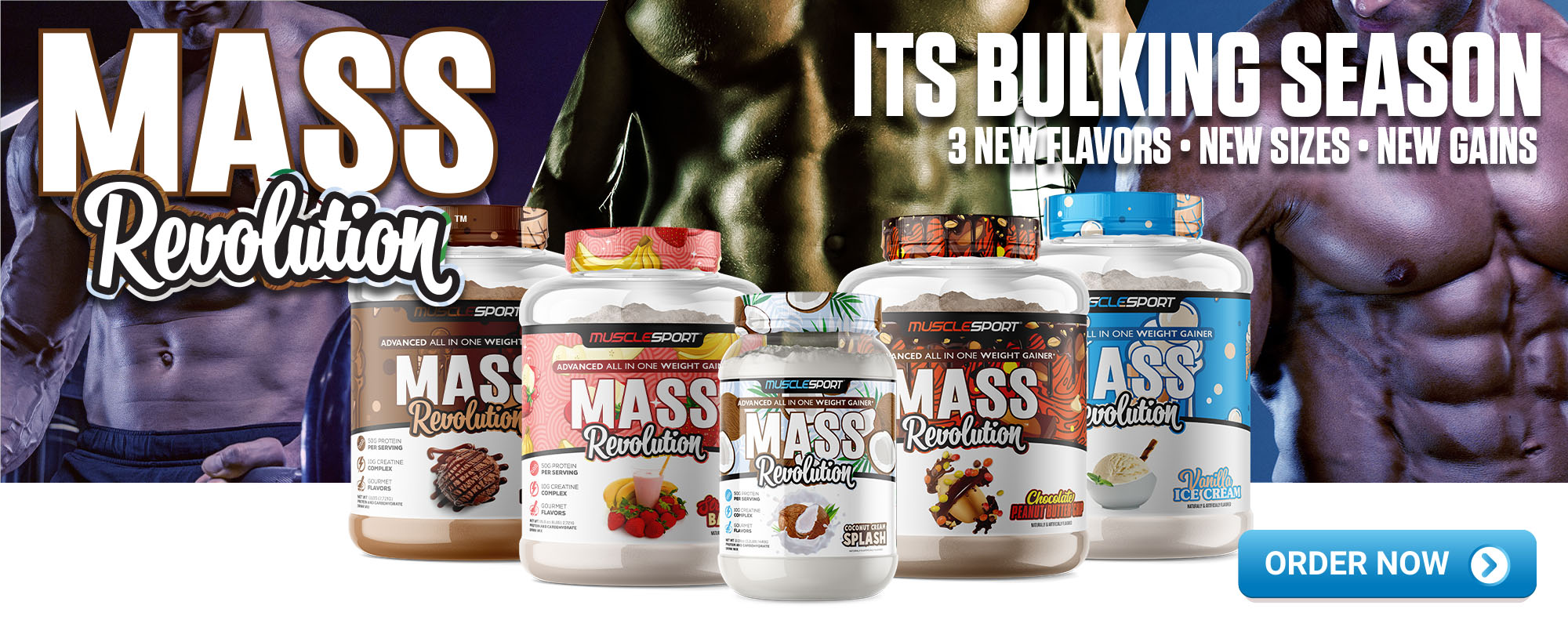


Comments and Discussion (Powered by the PricePlow Forum)